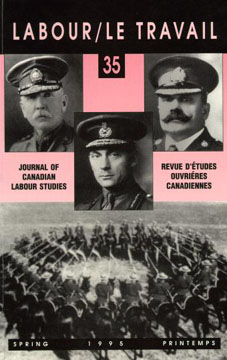Abstract
German-Canadian labour first organized itself at the national level soon after the outbreak of the Depression, in 1929. Once organized, the movement was integrated into the international communist labour movement, under the direction of the Comintern. After the rise to power of Adolf Hitler in Germany, German-Canadian labour changed its focus from radically altering society to fighting Naziism. The change in focus helped many German-Canadian pro-communists escape internment when war broke out. The war, however, brought an end to their organized activities. These recommenced soon after Nazi Germany's attack on the Soviet Union. Established in 1942, the German Canadian Federation became essentially an advocate of Soviet Russian views and interests. This greatly weakened its appeal in the German Canadian community and contributed to the demise of the German Canadian labour movement soon after the end of World War II.
Résumés
Les travailleurs canadiens-allemands s'organisent d'abord par eux-même très rapidement au niveau national après le commencement de la Depression en 1929. Le mouvement une fois organisé, fut intégré dans le mouvement ouvrier communiste international dirigé par le Komintern. Après l'accession d'Adolph Hitler au pourvoir en Allemagne, le mouvement mis de côté son but de modifier de façon radicale la société en faveur du combat contre le nazisme. Ce changement aida plusieurs Canadiens allemands pro-communistes à échapper à l'internement au moment où fut déclenchée la guerre. La guerre mit cependant fin à leurs activités. Ces dernières recommencèrent aussitôt après l'attaque de l'Union soviétique par les nazis allemands. Établie en 1942, la Fédération des Canadiens allemands devint essentiellement le reflet des vues et intérêts de la Russie soviétique. Cela affaiblit grandement son attrait au sein de la communauté canadienne-allemande et contribua au démantèlement du mouvement des travailleurs allemands aussitôt après la fin de la Seconde guerre mondiale.
